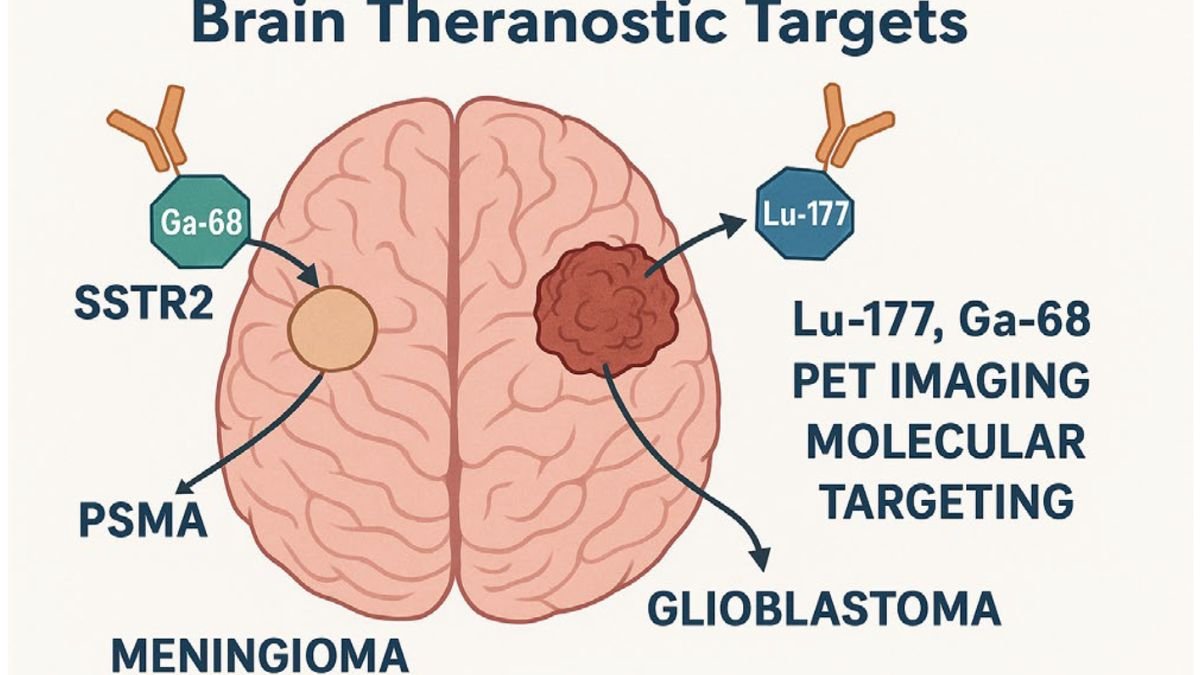Cancer is still one of the most challenging diseases in the world. Millions of people are affected by it every year and scientists are constantly looking for new ways to make cancer treatment more accurate, effective and safe. At such a time, “Theranostics” has emerged as an emerging technology that provides personalized solutions for cancer patients by combining diagnosis and therapy together.
Theranostics, along with Artificial Intelligence (AI), advanced imaging and targeted therapies, has the potential to completely change the direction of cancer treatment in the future. In this article, we will learn in detail what theranostics is, how it works, what is the role of AI and imaging in it, and how it will improve the lives of cancer patients in the coming years.
What is Theranostics?
Theranostics is a combination of two words – Therapy and Diagnostics. This means a technology in which accurate detection of the disease and its targeted treatment are done simultaneously.
- In cancer treatment, theranostics means:
- The use of special radio-isotopes and imaging technology to find cancer cells in the patient’s body.
- Using the same marker, drugs or radiotherapy are delivered only to the cancer cells.
- In this way, accurate identification of cancer and its personalized treatment, both become possible on the same platform.
Limitations of traditional cancer treatment
Traditional cancer treatments, such as chemotherapy or radiation, often affect the entire body. Their main disadvantages are:
- Side effects such as hair loss, vomiting, fatigue, weakening of the immune system.
- Affect on healthy cells as well.
- Not having the same effect on every patient.
This is why doctors and scientists are now moving towards solutions that are targeted and personalized. Theranostics is the biggest step of the future in this direction.
AI and Theranostics: The Foundation of Smart Treatment
Artificial Intelligence (AI) is transforming the medical field today. Its role in theranostics is extremely important:
Data Analysis
Cancer patients have a huge amount of data on genomics, biomarkers, imaging and medical history. AI can quickly analyze this data to identify patterns and decide which treatment will be most appropriate.
Accuracy in Imaging
AI algorithms can make MRI, CT scan or PET scan images even more clear and detailed. This makes it easier to identify cancer cells in the early stages.
Predictive Models
AI helps predict how quickly a patient’s cancer will grow and how effective which therapy will be.
Drug Discovery
AI is proving to be extremely helpful in developing new cancer drugs and targeted therapies.
Role of Imaging: The Eyes of Theranostics
Imaging technology can be called the “eyes” of theranostics. Without imaging, cancer cannot be detected nor targeted therapy can be given.
- PET/CT Scan: It helps in identifying the metabolism of cancer cells.
- MRI (Magnetic Resonance Imaging): Provides detailed images of tissues and tumors.
- SPECT (Single Photon Emission CT): Provides functional information using radioisotopes.
In the future, AI-enabled imaging will be even more accurate, not only detecting cancer but also estimating the exact extent and spread of the tumor.
Targeted Therapies: Treatment only for Cancer Cells
The biggest advantage of theranostics is targeted therapy. This means that the drug or radioisotope is delivered directly to the cancer cells, which:
- Healthy cells are protected.
- Side effects are reduced.
- The success rate of treatment increases.
Major targeted therapy techniques
Radio-ligand therapy (RLT)
In this, the radioactive substance is bound to special receptors present on cancer cells. This destroys only cancer cells.
Monoclonal antibodies
These are special proteins that recognise cancer cells and deliver the drug or radiation only to them.
Genomic-based therapy
Targeted drugs are given based on changes in the patient’s DNA.
Benefits for patients
- Personalised treatment – Each patient receives treatment based on his genes, biomarkers and the nature of the disease.
- Fewer side effects – There is little or no effect on healthy cells.
- High success rate – Targeting cancer cells makes the treatment more effective.
- Better quality of life – patients can live longer and better lives.
Future Prospects
Theranostics is still in its early stages, but its potential in the coming years is huge:
- AI and Big Data: Creating personalized cancer maps for every patient.
- Nanotechnology: Delivering drugs to cancer cells through nanoparticles.
- Real-time monitoring: Instantly observing the response of cancer cells during treatment.
- Global access: Access to developing countries through low-cost technologies.
Challenges
However, there are some challenges in this field:
- Expensive technology and high cost of treatment.
- Limited availability in developing countries.
- Lack of awareness about new technologies among patients and doctors.
- Need for large-scale clinical trials.
Conclusion
Theranostics is the future of cancer treatment, which promises to defeat cancer in a more precise, effective and safe way with the help of AI, imaging and targeted therapies.

